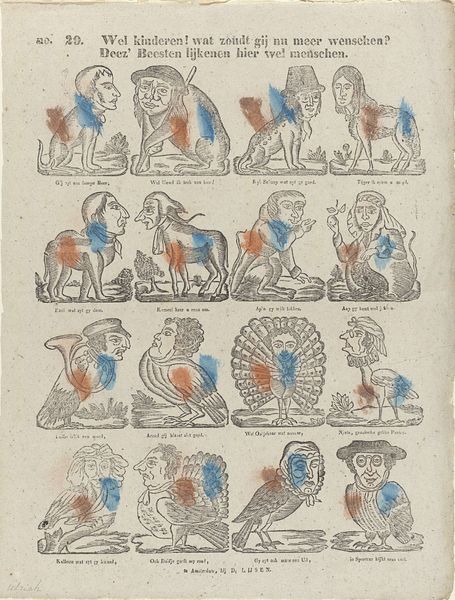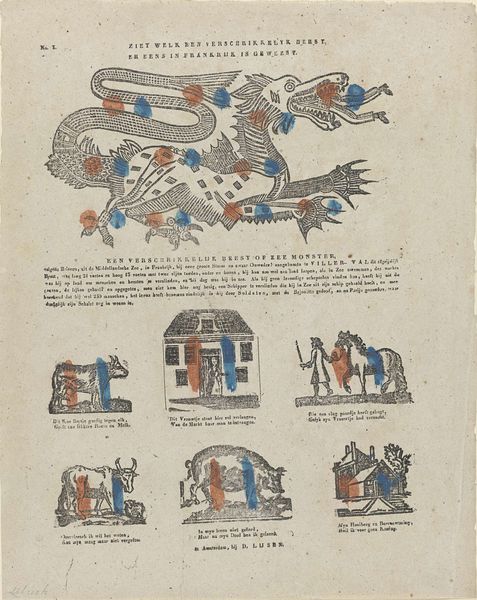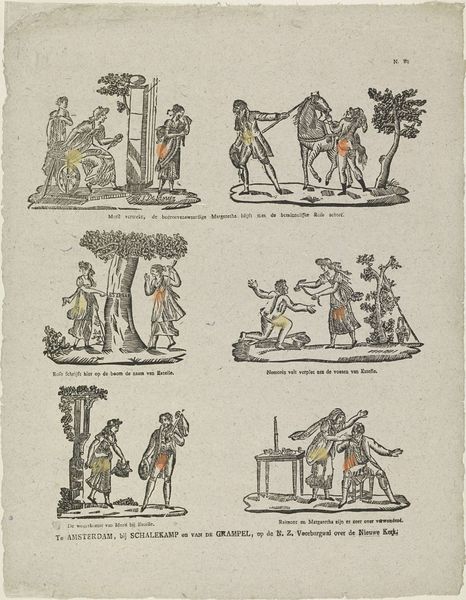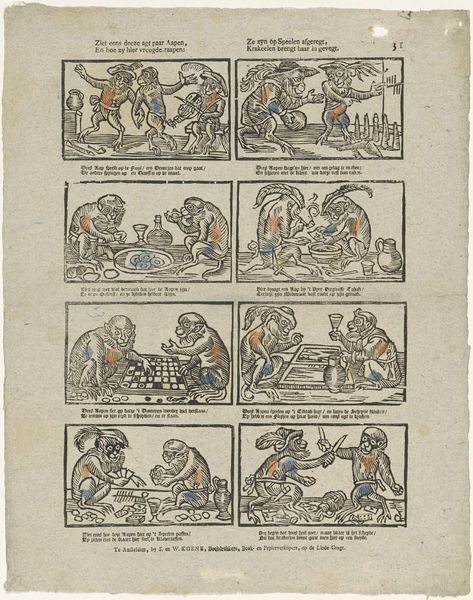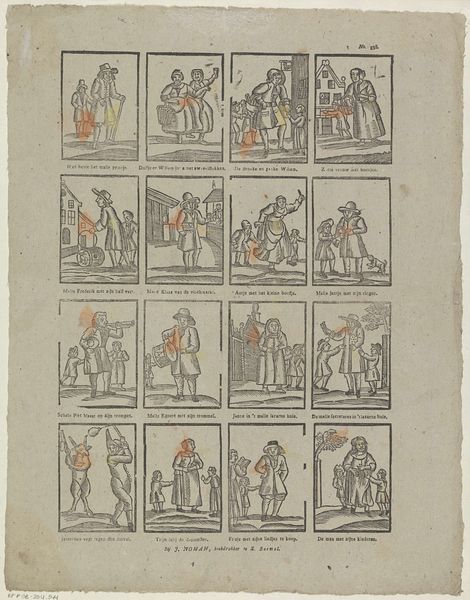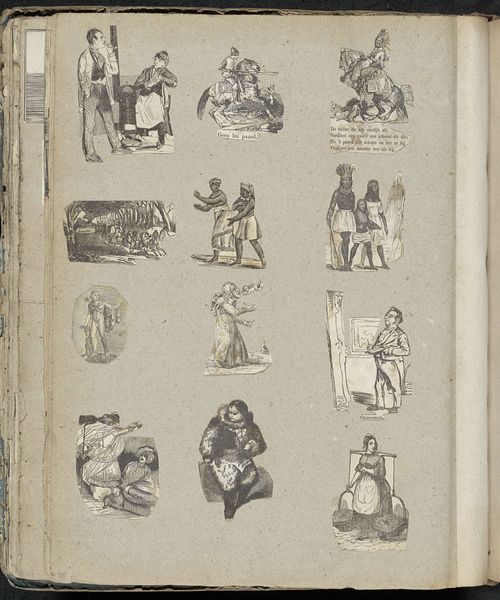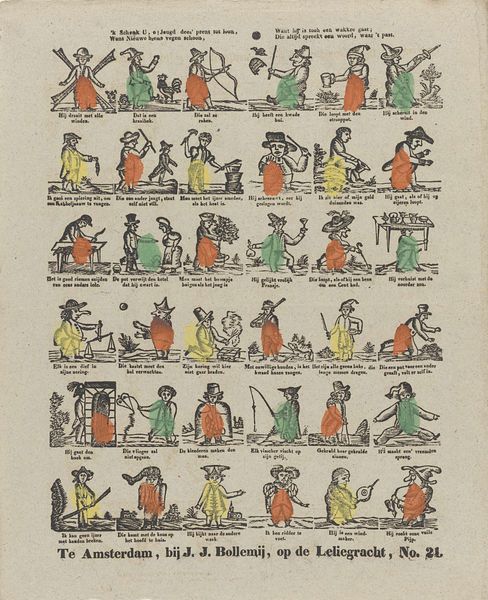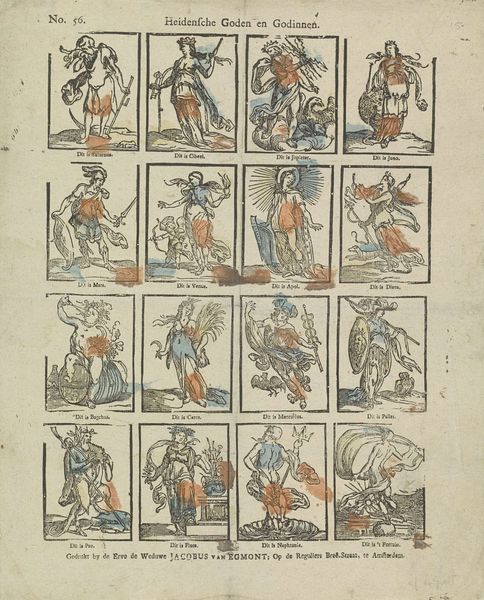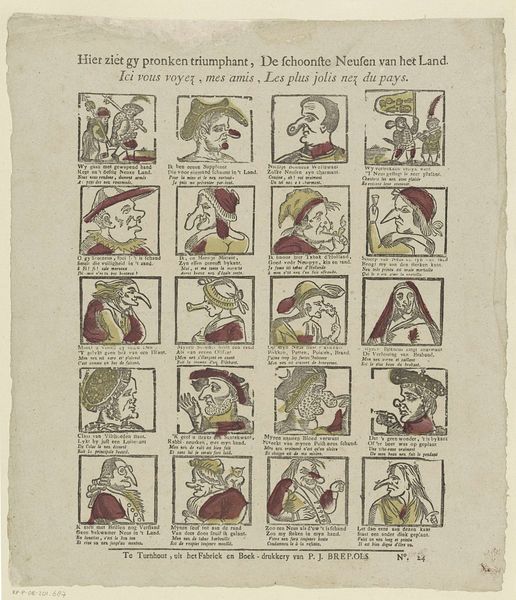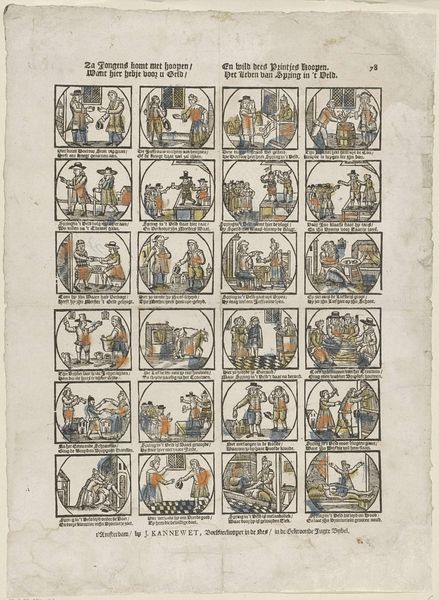
Wel kinderen! wat zoudt gij nu meer wenschen? / Deez' beesten lijkenen hier wel menschen 1816 - 1849
0:00
0:00
drawing, print, ink
#
drawing
#
dutch-golden-age
# print
#
caricature
#
figuration
#
ink
#
folk-art
#
genre-painting
Dimensions: height 419 mm, width 340 mm
Copyright: Rijks Museum: Open Domain
Curator: Here we have a print dating from the period 1816-1849, "Wel kinderen! wat zoudt gij nu meer wenschen? / Deez' beesten lijkenen hier wel menschen," attributed to G. Hesselink. It’s a drawing made with ink, showcasing elements of caricature and folk art. What are your initial thoughts, Editor? Editor: Well, it's wonderfully strange! A real cabinet of curiosities, visually. The human-animal hybrids are unsettling and comical. It's got this eerie charm, like something from a slightly nightmarish children's book. Curator: The title translates roughly to "Well children! what more could you wish for? These beasts look like humans here." It suggests a social commentary through the lens of bestial figures, common in the folk art tradition, wouldn’t you agree? Editor: Absolutely. It's playing with satire. The Dutch Golden Age style it's tagged with gives it a historical heft, but the composition with all these distinct characters lined up on a grid lends itself to…reproduction, to distribution, perhaps even playful trade or exchange of images among friends and acquaintances. It has a decidedly “meme-like” quality…centuries ahead of the internet! Curator: Exactly! Hesselink would likely have understood that printing and wider distribution democratize access to images and commentary. These hybrids probably functioned as recognizable social types to his contemporaries. I am particularly interested in the application of ink as both a drawing and printing material and how it cheapens this form of production. Editor: It makes me think about the phrase, "the banality of evil." Each of these beast-people are rendered without tremendous artistry, but they clearly communicate specific negative character qualities when read in combination. Are they cautionary figures meant to socialize youth, or do they target and make fun of identifiable elite Dutch classes from this period? Maybe a bit of both? Curator: Possibly both! The piece resides on the boundary between craft, folk art, and what we'd call high art today. Its value isn't necessarily in exceptional skill, but in the way it encapsulates social attitudes. Editor: A potent little slice of the past. You look at it and, suddenly, two centuries compress. Human folly never gets old, I suppose.
Comments
No comments
Be the first to comment and join the conversation on the ultimate creative platform.
